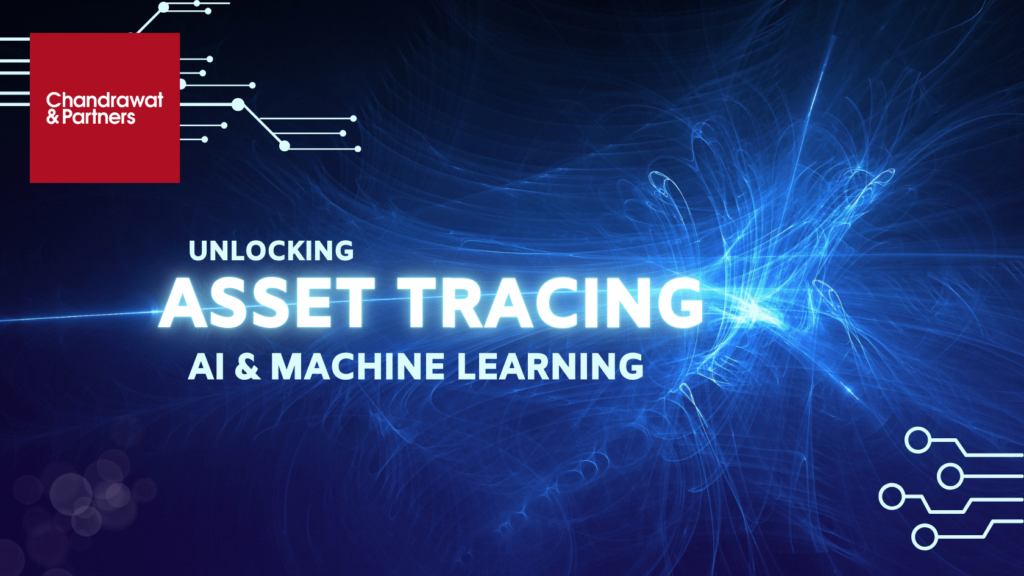Edit Content
Edit Content
Edit Content

In the realm of asset tracing, the infusion of artificial intelligence (“AI”) and machine learning technologies has emerged as a catalyst for transformative change. These advanced tools offer unprecedented capabilities in uncovering hidden assets, identifying intricate patterns of financial misconduct, and facilitating the recovery of unlawfully acquired wealth. Here we delve deep into the emerging trends and profound implications of AI and machine learning applications in asset tracing.
The essence of AI and machine learning lies in their ability to process vast volumes of data with remarkable speed and accuracy, far surpassing the capabilities of human analysis alone. In the context of asset tracing, these technologies revolutionize traditional investigative approaches by automating the analysis of complex financial transactions, discerning patterns indicative of asset concealment, and revealing connections across disparate data sources. By harnessing sophisticated algorithms, AI systems can navigate through intricate webs of financial activity, uncovering crucial insights that might elude manual scrutiny.
At the core of AI-driven asset tracing is its unparalleled capacity for data analysis. By ingesting and analysing diverse datasets encompassing financial records, transaction histories, digital footprints, and beyond, AI algorithms can discern subtle anomalies and patterns indicative of illicit financial activities. Through advanced data processing techniques such as natural language processing (“NLP”) and network analysis, these technologies unearth previously unseen correlations and relationships, enabling investigators to trace the flow of assets with unprecedented precision and efficiency.
A hallmark of AI-powered asset tracing is its predictive capabilities. Machine learning models trained on historical data can forecast future trends and behaviours, empowering investigators to anticipate potential asset movements or fraudulent activities. By identifying early warning signs and risk factors, predictive analytics enable proactive intervention to prevent asset dissipation and mitigate financial losses. Whether it is predicting market fluctuations, identifying potential money laundering schemes, or anticipating changes in asset ownership structures, AI-driven predictive analytics revolutionize the landscape of asset tracing by augmenting human expertise with data-driven foresight.
AI-enabled asset tracing solutions often incorporate automated monitoring and alert systems to continuously survey financial transactions in real time. These systems leverage machine learning algorithms to detect anomalies, flag suspicious activities, and generate alerts for further investigation. Whether it is detecting large fund transfers, unusual spending patterns, or sudden changes in asset ownership, automated monitoring systems serve as a proactive defence mechanism against financial fraud and asset dissipation. By streamlining the monitoring process and enabling rapid response to potential threats, these AI-driven solutions empower legal professionals to safeguard assets and uphold regulatory compliance standards effectively.
While the potential of AI and machine learning in asset tracing is undeniable, it is imperative to acknowledge and address the challenges and considerations associated with their deployment. Chief among these are concerns related to data privacy, confidentiality, and security. As AI algorithms rely heavily on access to vast amounts of sensitive data, ensuring compliance with data protection regulations and safeguarding against unauthorized access or misuse is paramount. Moreover, the inherent biases and limitations of AI models necessitate careful validation and calibration to mitigate the risk of erroneous conclusions or discriminatory outcomes. Transparency and interpretability in algorithmic decision-making are equally crucial, particularly in legal contexts where accountability and due process are paramount.
The integration of AI and machine learning technologies heralds a new era of innovation and efficiency in asset tracing, empowering legal practitioners with unprecedented capabilities to combat financial crime and uphold the integrity of financial systems. By harnessing the power of advanced data analysis, predictive analytics, and automated monitoring systems, AI-driven asset tracing solutions redefine the boundaries of what is possible in uncovering hidden assets, tracing illicit financial flows, and facilitating the recovery of unlawfully acquired wealth. However, to fully realize the transformative potential of these technologies, it is imperative for legal professionals to navigate the complex landscape of regulatory compliance, ethical considerations, and technological challenges with diligence and foresight. In doing so, they can harness the full potential of AI and machine learning to advance the cause of justice and accountability in asset tracing endeavours.
For more information or queries, please email us at
[email protected]

Managing Partner
Copyright © Chandrawat & Partners. All Rights Reserved.
Copyright © Chandrawat & Partners. All Rights Reserved.

Chandrawat & Partners stands as a dynamic and rapidly expanding full-service firm, specializing in the delivery of exceptional professional and corporate services to a diverse clientele, both foreign and local. We proudly represent companies and individuals across a wide spectrum of sectors through distinct entities established in various countries worldwide.
ASIA
AFRICA
EUROPE
NORTH AMERICA
SOUTH AMERICA
OCEANIA
Chandrawat & Partners uses cookies to run our site and improve its usability.
By using our site you agree to our use of Cookies.